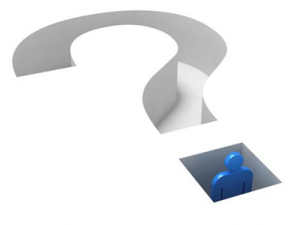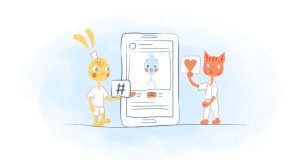As we become increasingly tied to our mobile devices, columnist Melissa Feemster explains why marketers shouldn’t forget the power of in-person meetings.

I’ll come right out and confess it — I love my phone, but I haven’t found it to be “part of me” the way some people have. At risk of sounding crazy, I think this lends an edge to my leadership style — client services requires being in the moment and reacting to what is happening in real time.
However, this will not be a “Jerry Maguire“-style personal mission statement against technology and how horribly we’re all addicted to it. It is also not to diminish how essential mobile and virtual applications have become in business, but to serve as a reminder that the best customer service and client relationships still come from in-person meetings, and technology can’t replace them.
Current Landscape
Every minute of the day, email users send over 200 million messages, Facebook users share 2.46 million pieces of content, Twitter users tweet 277,000 times, and Google receives over 4 million search queries.
There’s no escaping it — we’re connected in every way imaginable and have come to use our mobile devices as an extension or expression of who we are as people.
And we don’t technically even have to meet in person anymore — with Skype, FaceTime, ooVoo, Google Hangouts, Movi, and many other video call technologies, we connect visually to discuss pressing business or just to catch up, on any continent at any time of the day or night.
While travel used to be the only method, the alternatives have saved businesses billions of dollars each year while still simulating the in-person meeting.
So, why the insistence of actual versus virtual meetings? What’s wrong with our current state of over-reliance on email, teleconferences and instant messaging? As it turns out, there is still something technology cannot replicate: the human connection that is the foundation for all relationships in business and in life.
Building Trust
Knowing that in-person meetings are no longer necessary to communicate makes them that much more special. Like receiving a handwritten card in the mail, in-person meetings demonstrate that you value the relationship enough to go the extra mile.
Too often, businesses hide behind the anonymity of their connected devices — you don’t know who they are, or if they are actually care about your partnership. No matter how tech-savvy our business may be, looking someone in the eye is still the most effective way to denote your authenticity, authority and confidence.
How you carry yourself is oftentimes more important than the words you say; it exposes who you really are and what you stand for.
In-person meetings also foster effective communication. Not everyone has the ability to write emails that are clear, and even if they do, the person reading them can still interpret them however they want.
The same is true for phone calls. Most business calls focus on solving problems quickly rather than really listening and sharing — not to mention the person reading the email or on the call is likely somewhat distracted by other things. Face-to-face communication demands attention, shows you value the other person, and most importantly, inspires trust.
Body Language
Nonverbal cues are critical to communication effectiveness. Unfortunately, teleconferencing cannot capture all of the body language signals that tell us what the other person is thinking. We can’t always pick up on when someone on the call has lost interest, wants to speak or doesn’t understand what you’re saying.
I can recall several times when I was able to pick up on nonverbal cues from clients during meetings. For example, I could see they were focusing on a particular bullet point on the slide behind me and could read on their face that they didn’t understand it.
Sharing the space with them allowed me to address it before they tuned out what I was saying. Similarly, I could tell when they were responding positively to certain points I was making, which prompted me to share more details.
Without these moments, I could have easily hurt or lost business with some of my most valued clients. Countless studies have been conducted on the power of nonverbal communication.
Postures, gestures, and facial expressions all play a role in how successful your meeting will be — face to face gives you the upper hand in identifying these cues before it’s too late.
Bonding
Social interaction (and not the Facebook kind of social) allows you to speak the same language. When you meet with someone face to face, you are creating an experience that you both share. It is something you now have in common with the other person — a sense of community.
This camaraderie enhances future communication as well. When you interact with someone socially, you promote collaboration, richer sensory experience, and better understanding of the other person.
These factors don’t disappear when you leave the meeting — they construct a culture, or bond, that can be crucial during difficult times in your relationship.
If you’re like me, you have colleagues in different offices around the world. When a new employee joins my team, I make it a point to go meet with him or her in person as soon as my schedule allows. We go to lunch or coffee and get to know each other because it’s important they feel a part of the company.
This is because no amount of emails or phone calls can replace the connection that’s created in an hour or two of spending time outside of the office with a co-worker or business associate. I know there are scientific reasons why — something about oxytocin or serotonin being released in the brain — but I’m sure of it because I’ve experienced it. I’m sure you have, too.
In Summary
Take the time to meet face to face to get the most out of your internal and external business relationships. I’ve found it is the secret sauce to our services organization, and to creating a team culture that gels together across time zones.
When I log into Tripit (naturally, my phone travel app), I’m reminded of the many experiences I’ve had over the past few years — it tells me I’ve traveled 582,198 miles to 108 locations!
Meeting face to face also is my favorite part of my job — a great meeting with takeaways that grow a client’s business for the next six months is always worth the time and investment to get there.
Marketing Land – Internet Marketing News, Strategies & Tips
(235)






